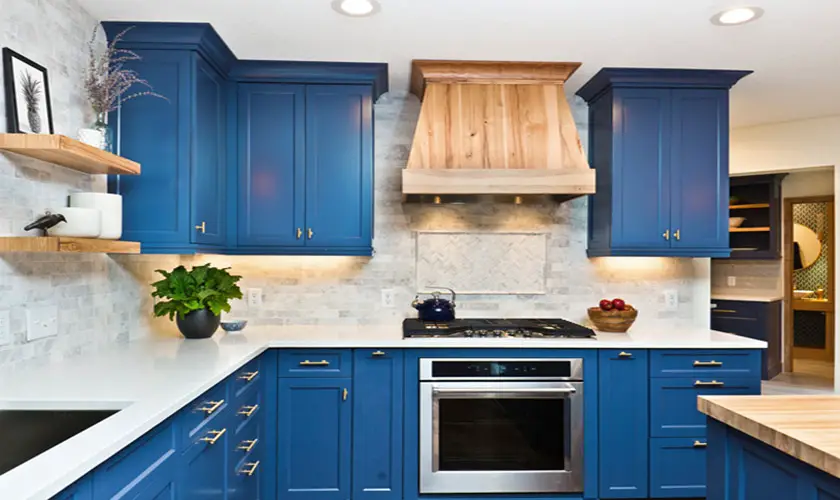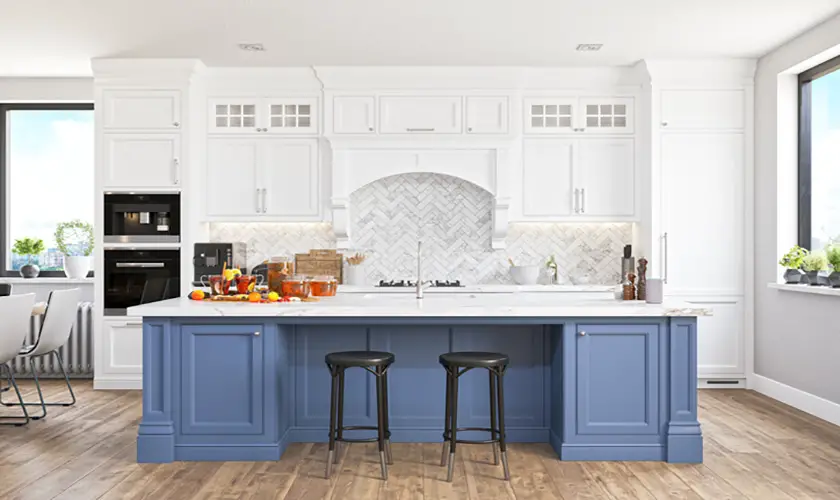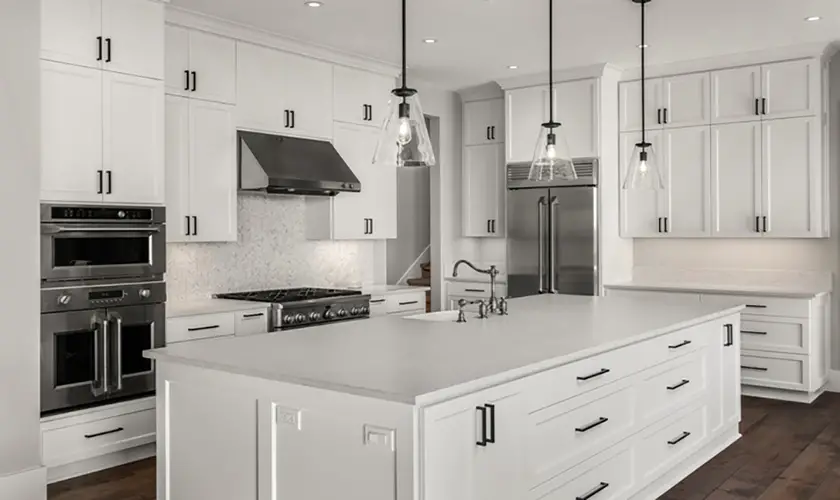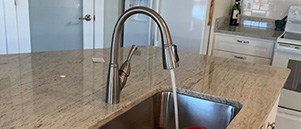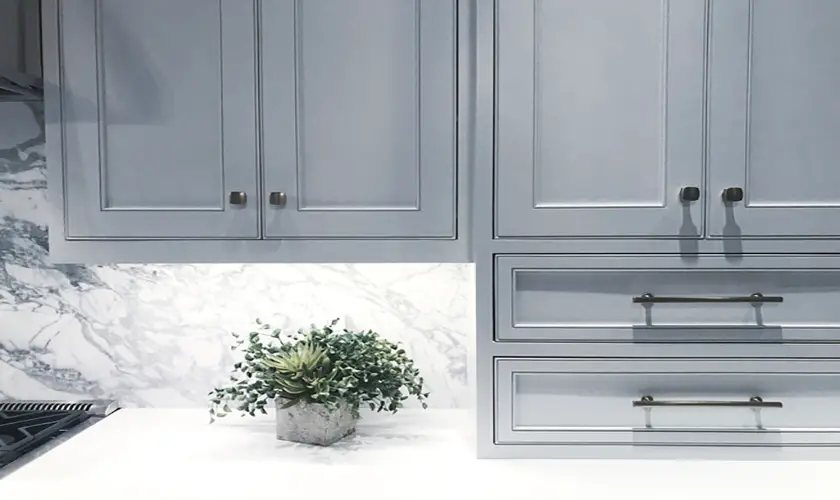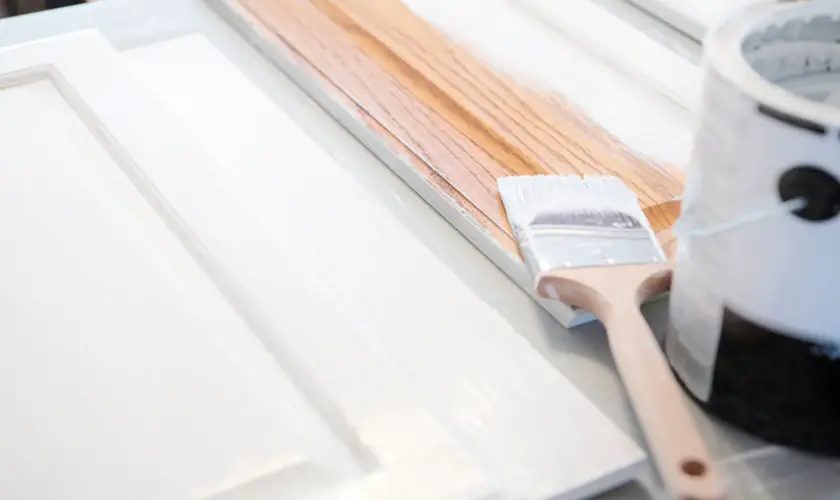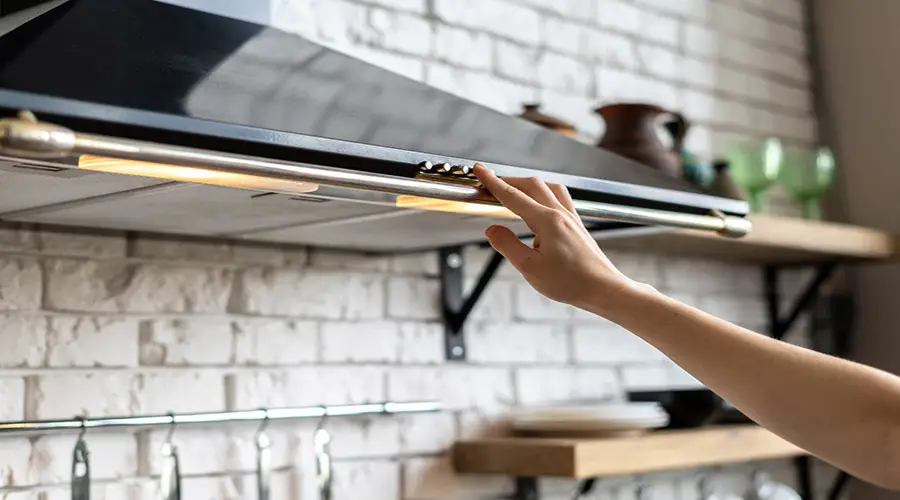
The range hood is a working kitchen’s most common yet overlooked component. People often forget that they even have a kitchen range hood, let alone worry about how it works. However, if you cook, you’ll want a working kitchen exhaust fan, of which there are two basic types: ductless and ducted.
A ductless range hood, or ventless range hood, works by filtering and recycling air inside your kitchen. Rather than having a vent outside your home, a ductless range hood utilizes a carbon or charcoal filter to purify the air. Ductless models are a great alternative to ducted hoods if you’re tight on space or don’t have access to an outside wall.
How Does a Ductless Range Hood Work?
Ductless range hoods go by several names, including ventless range hoods and recirculating range hoods. Rather than carrying dirty air outside of a kitchen via a vent, ductless range hoods have a series of filters that purify the air and then recirculate it. Ductless range hoods are also an effective means of removing the smoke wafting in the air.
While vented range hoods are often preferred, there’s a place in the working kitchen for ventless ones. Let’s go through a step-by-step process of how ventless range hoods work.
- The range hood usually gets installed above a stove, oven, or grill. Many kitchens only have one range hood, but you can have as many. Multiple range hoods with various cooking appliances are essential in restaurants and other settings.
- As you are using your kitchen appliances, they typically release smoke, steam, grease, and other debris into the air. If you are creating smoke and other harmful chemicals, it’s essential to have your range hood turned on to get rid of it.
- The ductless range hood has a fan inside it that sucks air into the hood.
- Carbon or charcoal filters inside the recirculating hood also filter out cooking odors, smoke particles, debris, and other contaminants from the air. The fan sucks dirty air into the filters, capturing and absorbing the pollutants.
- The clean air gets released after passing through the filters and circulates back into the kitchen.
This last step is the main difference between a ducted range hood and a ductless one. Where a ducted range hood has a vent on the back or top of it that carries dirty air outside of the house or building you’re in, a ductless range hood cleans the air and releases it back into the kitchen.
Ducted hoods also don’t have carbon or charcoal filters inside them because there’s no point in cleaning the air that gets ejected from the building. They will have a baffle or mesh filter that covers and protects the fan motor and blocks most cooking grease.
Modern ductless hoods have stainless steel baffle filters reminiscent of those inside commercial kitchens. Baffle filters are the best option for a ductless system because the baffles are dishwasher-safe.
Ventless hoods are unsuitable for gas stoves, requiring a ducted model to remove cooking exhaust and comply with local building codes.
Noise Levels of Ductless Range Hoods
Noise levels are measured in decibels. The noise level of the ductless kitchen hood will vary based on fan speeds. Decibel levels will vary based on the fan power inside the ductless vent hood.
The highest fan speeds have the highest decibel levels. Cheap fans usually have 2 or 3 fan speeds. More expensive fans can have six or more speeds.
The consensus is that a range hood with a noise level of 40 decibels on the lowest and only 65 decibels on the highest setting is considered an ultra-quiet range hood.
Some range hoods measure sound in sones. A sone is a unit of loudness or the subjective perception of sound pressure.
To convert Sones to dB, we use the following equation:
dB = 33.2×log10(Sones) + 28
You may see noise levels in sones instead of decibels. To convert decibels to sones, you can use the equation:
Sones = 10((dB-28)/33.2)
Most range hoods operate around 6 to 10 stones on the highest setting.
For a frame of reference,
- One sone: the sound of a refrigerator humming
- Two sones: a quiet office or another professional environment
- Three sones: a TV playing at a comfortable volume
- Four sones: a typical conversation between two people
- Five sones: a louder, more active conversation
- Six sones: a quieter restaurant setting
- Seven sones: light traffic
- Eight sones: the average sound of traffic
- Nine to ten sones: congested traffic sound
The chart below shows the Sones to decibels conversions, but you can also check out the Sones to dB calculator.
Sones To dB Chart
| Sones | Decibels (dB) |
|---|---|
| 1 Sone | 28.00 dB |
| 1.5 Sones | 33.85 dB |
| 2 Sones | 37.99 dB |
| 2.5 Sones | 41.21 dB |
| 3 Sones | 43.84 dB |
| 3.5 Sones | 46.06 dB |
| 4 Sones | 47.99 dB |
| 4.5 Sones | 49.69 dB |
| 5 Sones | 51.21 dB |
| 6 Sones | 53.83 dB |
| 7 Sones | 56.06 dB |
| 8 Sones | 57.98 dB |
| 9 Sones | 59.68 dB |
| 10 Sones | 61.20 dB |
| 11 Sones | 62.57 dB |
| 12 Sones | 63.83 dB |
| 13 Sones | 64.98 dB |
| 14 Sones | 66.05 dB |
| 15 Sones | 67.05 dB |
| 16 Sones | 67.98 dB |
| 17 Sones | 68.85 dB |
| 18 Sones | 69.68 dB |
| 19 Sones | 70.45 dB |
| 20 Sones | 71.19 dB |
What does CFM Mean?
CFM is an acronym that stands for cubic feet per minute. It is a measurement unit that describes a range hood’s airflow rate. The CFM rating of a range hood tells you how much air it can move in one minute.
Most range hoods have a CFM rating between 150 and 1,000. The size of your kitchen and the cooking you do will determine the CFM rating you need. The larger the cooking surface and your cooking habits will often dictate the size and CFM you need.
For example, if you have a small kitchen and do light cooking, you may only need a range hood with a CFM rating 150. But if you have a large kitchen and do heavy cooking, you may need a range hood with a CFM rating 1,000.
Most basic under-cabinet range hoods have about a 250CFM rating. An ultra-high CFM range hood would be 900CFM or higher.
When shopping for a range hood, compare the CFM ratings of different models to find the one best suited for your needs.
The width (size) of the hood and the actual CFM can be much different. For example, you can have a wide hood to match your range size aesthetically but internally have a small fan motor that doesn’t move much air.
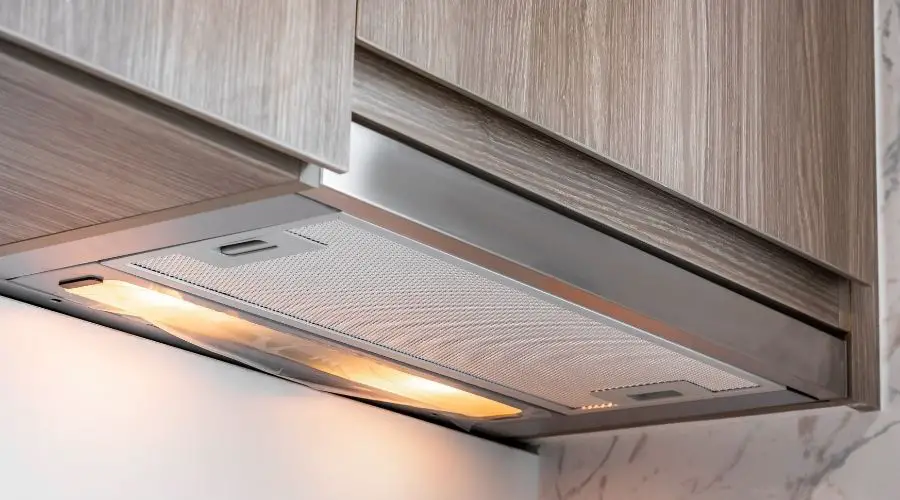
Different Types and Styles of Ductless Range Hoods
Because of how popular and essential kitchen hoods are, there are many different types of range hoods based on the application and location of the range.
Under Cabinet Range Hoods
Under-cabinet range hoods are the most common type of ductless hood. You install these conventional range hoods when your oven is against a wall and overhead cabinets above it. An under-cabinet range hood is fastened to the bottom of an overhead cabinet directly above the range.
As far as ductless exhaust hoods go, under-cabinet installations are the perfect place for them. Most ducted range hoods have vents on top, meaning the vent pipe is inside the cabinet.
Not only does this take away from storage space in your kitchen, but it also exposes everything in the cabinet to potentially harmful chemicals. Therefore, ductless range hoods are an excellent option for under-cabinet installations. Check out our best under-cabinet range hoods.
Island Range Hoods
It sounds like an island hood – range hoods above a kitchen island area. Adding an island range is a good idea if your oven or a cooktop grill is on a kitchen island. Island ranges will ensure that all the chemicals, smoke particles, and grease created on the cooktop or island range get sucked into the range hood.
While ductless range hoods usually aren’t used on island installations, they’re an option if you don’t have easy access to the outside for a ducted range hood.
Island hoods pose particular problems with venting, especially if you have a second floor. Hence, this is why non-vented range hoods are particularly essential.
Wall Mounted Range Hoods
Wall-mount range hoods are installed similarly to under-cabinet range hoods but without a cabinet above them.
Wall-mounted hoods are another example where most people don’t use ductless hoods when vented hoods are an option.
However, if you don’t have access to an outside wall or the roof, ductless wall-mounted range hoods are an excellent option.
Downdraft Ventilation
Downdraft ventilation is a unique but effective solution when venting upwards isn’t an option. A typical range hood is installed directly above a range or cooktop grill. Downdraft ventilation is built into the cooktop range and vented downward rather than upward.
You can opt for either a ductless or ducted downdraft range hood. Downdraft hoods are clever alternatives for smaller kitchens or if you want a clean look along with your ceiling and outside walls.
However, check with an HVAC professional before installing a downdraft range hood to ensure it will work for your purposes.
Convertible Range Hoods
One of the biggest problems people run into with range hoods is that they don’t know whether to install a non-vented or vent hood. Convertible range hoods are the perfect answer to this problem. Convertible range hoods can be changed from ducted to ductless and back whenever necessary.
Convertible range hoods are perfect for when you want a ducted range hood but are thinking about adding a wall or home addition in the future. A ducted range hood is ideal for now, but if you add or change the kitchen’s layout, you may no longer have access to an outside wall or ceiling.
It’s important to note that not all modern range hoods are convertible. Typically, you must purchase one with a specific design to change from ducted to ductless simply by adding a filter. While you can also go from ductless to ducted, this is less common.

What Kind of Filter Does My Ductless Range Hood Need?
Ductless range hoods have an internal filter responsible for catching and absorbing contaminants in the air. There are usually two sets of filters included in the ductless venting process. The first line of defense is a set of mesh or baffle filters that capture some larger particles.
The second set of filters is the activated charcoal carbon and mesh filters. Mesh filters (grease filters) trap grease in mesh material. Charcoal filters trap grease and neutralize strong cooking odors.
They are an excellent option for capturing large grease particles in the mesh filter. They also soak up grease, smoke, fat, and other contaminants floating in the air. These filters also capture most of the smoke or steam floating in the air but can’t catch all.
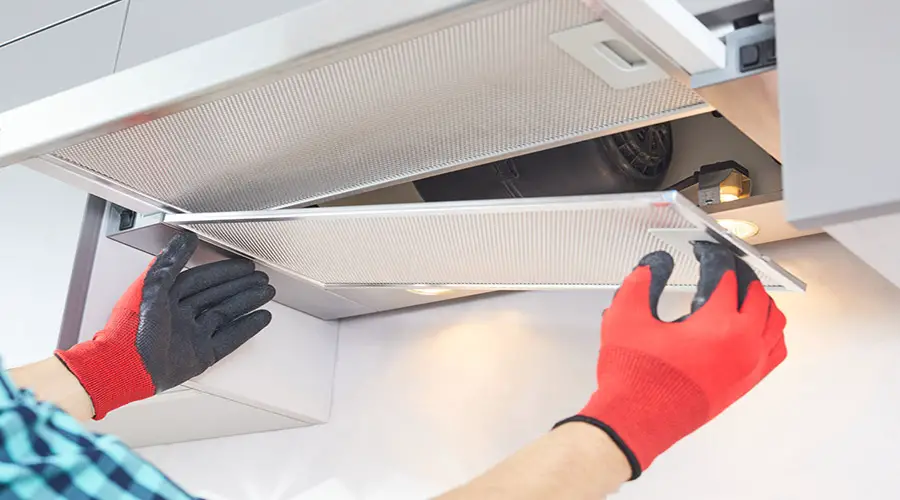
How to Properly Maintain My Ductless Range Hood
Properly maintaining your ductless range hood is an integral part of its performance. Ventless range hood filters work similarly to the filter on your furnace. As air passes, the filter traps and absorbs contaminants and gets dirty. The dirtier the filter gets, the less effective it becomes. Here’s how to maintain your ductless range hood.
- Wipe down the surface of your range hood using acetone or a glass cleaner.
- If necessary, use a heavy-duty soft scrub to remove stains and marks from the surface of the hood. Ensure you clean the inside and the outside to keep it in tip-top shape.
- Remove your stainless steel filters or mesh bafflers and perform the exact cleaning procedure.
- Remove the charcoal or carbon filters from inside the range hood. You may have to unscrew the fan to access them.
- Don’t try to clean your charcoal or carbon filters. Instead, you should replace them every six months to 1 year, depending on how much you use your range.

Do Ductless Range Hoods Work Effectively?
Now, we get to the golden question that thousands of renters and homeowners wonder about. Do ductless range hoods work, and how do they compare to vented range hoods?
Simply put, ductless range hoods work, but not as well as ducted ones. Because ductless range hoods recirculate old air back into the kitchen, they aren’t as effective as vented range hoods.
Vented range hoods remove the dirty air, removing any chance of contamination. Ductless range hoods remove most contaminants and debris in the air, but not everything.
Another issue with ductless range hoods is that they’re only as good as the care they’re given. Not maintaining your ductless range hood and regularly replacing the filters will doom your kitchen.
Reasons to Choose a Ductless Range Hood
While they aren’t as effective as vented ones, ductless range hoods do the job. They’re practical, easy to install, and maintain, making them a preferred choice for some homeowners. Here are some of the main reasons people opt for ductless range hoods.
No access to the outside
People mainly install ductless range hoods because they don’t have another option. Millions of Americans and people worldwide live in condos, apartments, and other multi-family buildings. Venting a range hood outside is impossible if your unit is in the middle of the building.
The same applies to houses with poorly designed kitchens where venting to the outside is impossible or impractical.
Don’t do a ton of cooking.
If you don’t do a lot of cooking or use your range often, there’s no reason for a vented range hood. You won’t make much of a mess or create a lot of smoke or grease. A ductless range hood will be more than sufficient to handle small amounts of cooking.
Need to save money.
Ductless range hoods are cheaper than vented ones, especially if you have them professionally installed.
They want to install the hood themselves.
If you plan to do the work yourself, ductless range hoods are relatively easy to install if you have the right tools.
On the other hand, Vented range hoods are more complicated because of the extra work involved. You’ll need to run a vent pipe outside your home or building, which is extremely difficult and sometimes involved.
Generally, those who do a lot of cooking will settle for no less than a vented range hood when given the option. They’re more efficient and effective at removing smoke, grease, carbon monoxide, fat, and other contaminants from the air.
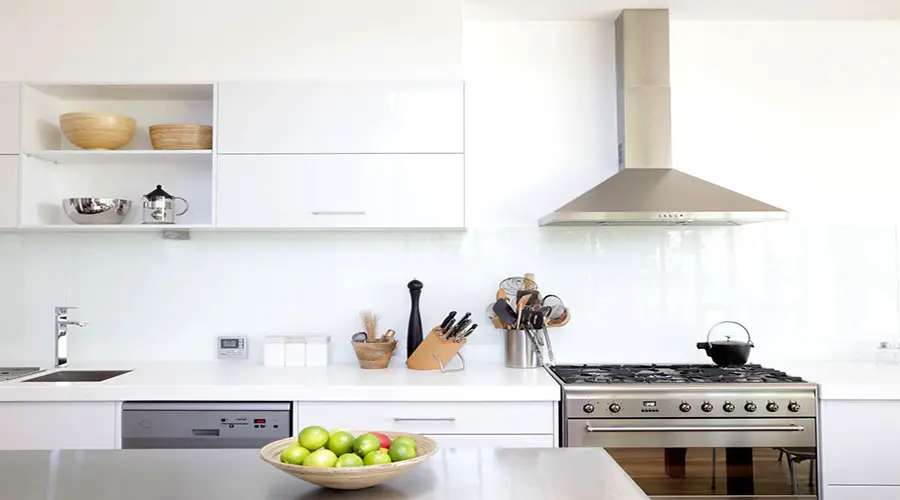
Pros and Cons of a Ductless Range Hood
If you’re still unsure which type of range hood to choose, let’s look at the pros and cons of a ductless range hood.
Advantages
Efficiency
Ductless range hoods aren’t necessarily more efficient than ducted ones, but their effect on your kitchen is. Ductless range hoods don’t create as much heat as vented ones, so your HVAC system won’t have to run as much.
Eco-friendly
Because nasty contaminants aren’t released into the atmosphere, ductless range hoods are more eco-friendly than ducted ones.
Affordable
The range hood price won’t vary much between ducted and ductless. However, the installation cost will be significantly less for ductless range hoods because of the extra labor and materials involved with vented range hoods.
Mobile and versatile
You can install a ductless range hood pretty much anywhere in your kitchen. Ductless range hoods are more mobile and versatile than ducted ones that must have access to the outside.
Aesthetically-Pleasing
You’re not giving up on aesthetics when opting for a ventless range hood. You can get the same designs and brands with a ventless hood as with a vented one.
Disadvantages
Effectiveness
The biggest con about ductless range hoods is that they aren’t as effective as ducted range hoods. This one downside is often enough to steer those installing a ducted range hood away from ductless ones.
Ductless Range Hood Installation
Installing a ductless range hood is considerably easier than installing a vented one. The extra work and material involved with ducted range hoods are also more expensive than ductless ones. Here’s how to install a ductless range hood. See the video below if you want a ductless island range hood.
Prepare the Installation Site
You’ll first want to select and prepare the site for installing the range hood. You should install your ductless range hood directly above your stove or oven at the height specified by your specific model.
The height is typically around two feet above the stove. If you already have an older hood, you’ll want to remove it and set it aside while installing your new one. Ensure that you don’t damage the electrical wiring when you disconnect it.
Install Strips of Wood for the Mounting Screws
Range hoods have a mounting bracket on top of them that gets screwed into place. Usually, you’ll want to install your hood above the stove and underneath some high cabinets. If you don’t have anything solid above the hood to screw into, you can also buy one that has a rear-mounting option.
Either way, you should ensure you have something solid to fasten the mounting screws. If you don’t have studs in the wall at the appropriate spots, you’ll have to cut open the drywall and install some. Or, you can purchase heavy-duty drywall anchors.
However, you must have at least one or two solid spots to attach your screws. Otherwise, the hood’s weight will cause it to detach from the wall and come crashing down.
Start by Properly Placing the Hood and Mounting It
Once you have a solid area behind or above your range hood, hold it and mark the holes in the bracket where the screws go through.
Some hoods come with a template that you can use to mark the insertion points, but it’s always a good idea to hold the hood up and visualize the project. Use a pencil to mark the holes on the bracket.
Next, take the bracket down and set it aside until you’re ready to hang it. You’ll notice that there are notches where two bracket holes are.
Range hoods have this feature, so you can partially tighten the screw and tentatively mount the bracket without completely fastening it. Do this now before proceeding to the final steps.
Fasten the Hood in Place
Once you have your hood exactly where you want it, tighten the screws you initially started. Next, insert a few extra screws into holes on the bracket and in areas where you have something solid to screw into. You want to ensure that your hood has been solid and unmoving for years.
Connect the Electrical Wiring
With the hood in place, it’s time to make your electrical connection. If you removed an old hood, use the same electrical wire you disconnected from the old one. If you’re installing a new hood without electricity, you’ll have to run an electrical wire to the correct location before connecting it to the hood.
At any rate, follow the instructions on your range hood directions to connect the electrical wiring properly.
Typically, there is a black wire, a white wire, and a green wire. Connect the black supply wire to the black wire on the range hood and the white supply wire to the white wire on the hood. Lastly, connect the ground wire to the green screw on the range hood as per the instructions.
Install the Light Bulb and Perform a Practice Run
Your final step is to install the light bulb on the range hood and perform a practice run. Ensure the power is turned on to the hood and hit the ON switch. Your ductless range hood will turn on, and you should hear a fan startup inside the hood.
Double-check the hood’s surface parts to ensure you remove all the tape and insulation used to hold pieces in place. You should also ensure the filter is correctly installed so your hood can do its job.
You would follow a similar procedure with a ducted range hood with the added step of installing a vent. Vents can be easy to install, or they can be an absolute pain in the neck. It depends entirely on the vent pipe size and how easy it is to get through an outside wall or roof.
Installing a Ductless Island Range Hood
How Effective are Recirculating Range Hoods?
Recirculating range hoods aren’t as effective as ducted ones, but they remove a bulk of contaminated air, grease, fat, smoke, and particles from your kitchen.
Can I Vent My Range Hood into the Attic?
If you’re installing a vented range hood or converting from a ductless to a ducted one, you’ll also have to install a vent. You should never vent a range hood into the attic, but always go outside.
Can I Vent My Range Hood into the Soffit?
Building codes prevent dryer and kitchen exhaust vents from venting to a soffit. Since soffits draw air into the attic through the soffit, venting out the soffit would draw the exhaust back into the soffit vent. Kitchen venting must be through a side wall or the roof.
Can I use a Ductless Range Hood in an Outdoor Kitchen?
Although unnecessary, you can use a ductless range hood for an outdoor kitchen. If your outdoor kitchen is underneath a covered patio, you can vent a ducted hood through a side wall or install a ductless model if you don’t want to install venting.


